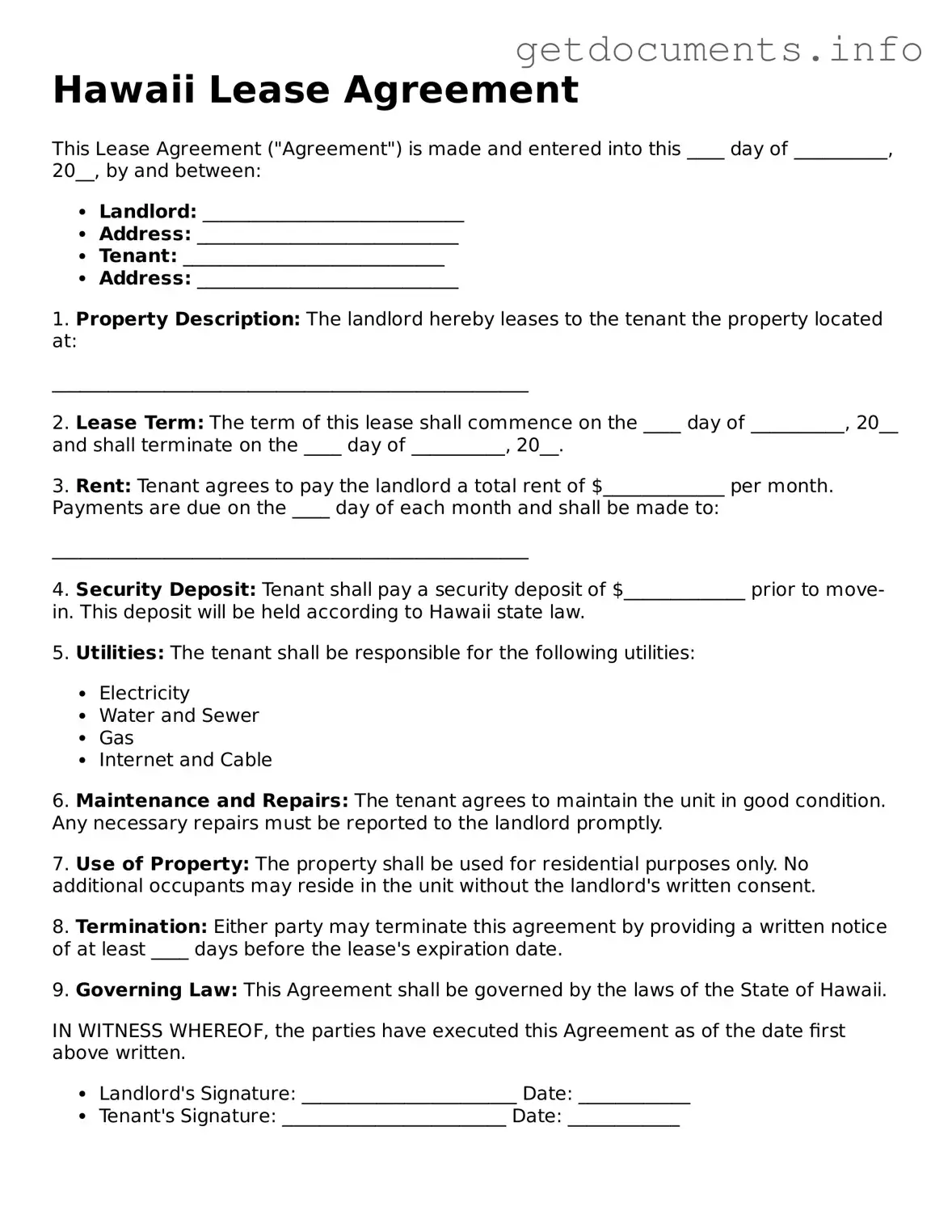Free Lease Agreement Template for Hawaii
A Hawaii Lease Agreement is a legally binding document that outlines the terms and conditions under which a landlord rents property to a tenant in the state of Hawaii. This form is essential for ensuring that both parties understand their rights and responsibilities, helping to prevent disputes. To get started on your lease, fill out the form by clicking the button below.
Access Lease Agreement Editor
